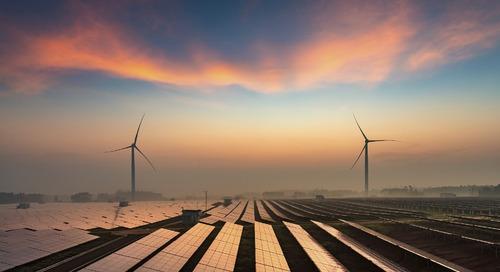Schneider Electric Asks: What Does it Mean to be a Climate Leader in 2020?

What Does it Mean to be a Climate Leader in 2020?
A new year, in a new decade, calls for a new approach to climate leadership. The year 2020 is an inflection point for climate action. It’s a year in which many companies seek to achieve interim carbon reduction goals in line with the Paris Agreement, and are looking to chart a course for even more ambitious goals over the coming decade.
Increased urgency around climate change, as a result of the most recent scientific evidence from the Intergovernmental Panel on Climate Change (IPCC), is evolving what it means to be a climate leader. At the same time, the minimum requirements for basic climate action will continue to rise due to consumer, investor and stakeholder demands for increased sustainability and transparency. Actions taken that used to firmly secure a business the position as ‘climate leader’ are now inadequate; business and governments are being called to step it up.
To get a better understanding of this shift, what it takes to be considered a climate leader in 2020 and the long-term planning companies can do to remain ahead of the pack, we spoke with Elin Olson, Senior Sustainability Specialist at Schneider Electric Energy & Sustainability Services.
Q: What is the climate situation that led the IPCC to recommend more ambitious climate action?
A: The report published by the IPCC looks at the impacts of global warming of 1.5°C above pre-industrial levels and calls on governments and business alike to aim for more aggressive cuts to carbon emissions. The science showed that the world is already feeling the consequences of 1°C of warming through more extreme weather, rising sea levels, loss of coral reefs and longer droughts, among other changes.
The difference of just a half a degree seems small, but every bit of warming matters. Limiting global warming below this new threshold is critical for avoiding irreversible changes, but there’s good news too. Although actions must accelerate, it is possible and some of the recommended actions are already underway. The leading edge of this evolution is an initiative called science-based targets (SBTs).
What should companies be doing today to keep pace with peers on climate action?
In the past, traditional emission reduction goals tended to be theoretical in nature; targets were not based on scientific evidence or aligned with any global climate agenda. To keep pace with today’s leaders, companies should seek to align company objectives with actions that science deems necessary to avoid the worst impacts of climate change. Companies that set and approve SBTs, for example, can demonstrate to stakeholders and investors that their sustainability programs are both ambitious and results-oriented.
Leadership with SBTs moves beyond the mentality of companies just doing their "fair share" to combat climate change. A company must now look beyond the impact of its own operations by engaging the entire value chain that feeds its business, to embed this mindset across companies globally. There’s a path to leadership for companies at all stages of target-setting:
- If your company is setting goals for the first time, set yourself up for long term results by beginning with SBTs.
- If you company already has climate goals that are not science-based, reassess how your current goals can be adapted to the SBT framework. If your goals are short-term in nature, consider showing ambition by setting longer-term SBTs in parallel.
- And if you already set an SBT under the original 2 °C warming scenario, consider reviewing (and, if necessary, re-validating) your target to bring it in line with the most recent climate science.

